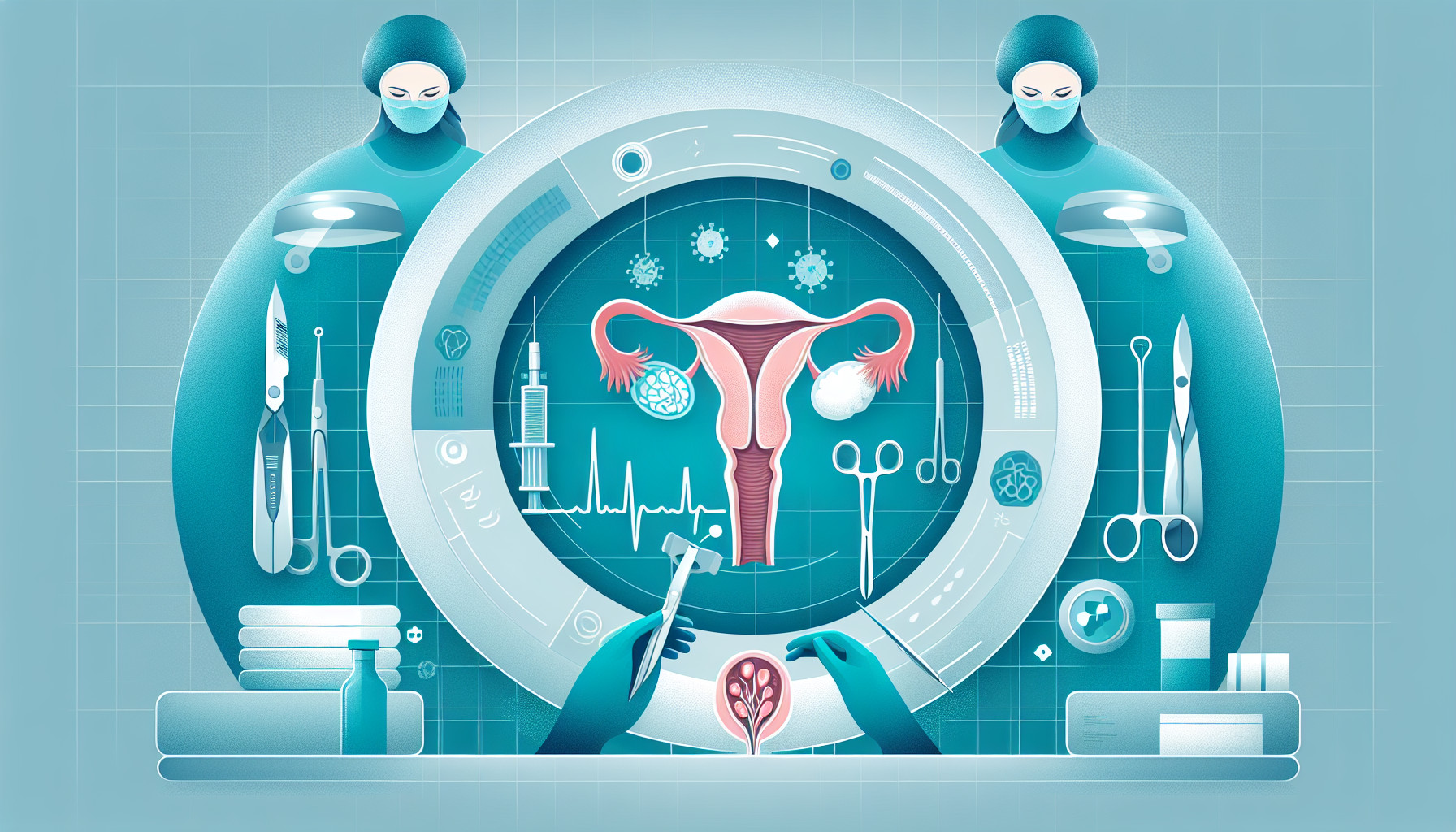Our Summary
This study discusses a medical case of a 21-year-old pregnant woman who had a very large ovarian cyst. Doctors suspected that the cyst was twisted, which can be dangerous. They didn’t know if the patient had COVID-19, so they performed a minimally invasive surgery (laparoscopy) using spinal anesthesia, which numbs you below the waist but keeps you awake. The woman was able to breathe normally during the procedure by changing her body position and reducing the pressure inside her abdomen. The cyst was successfully removed and the woman recovered well, without losing her pregnancy.
The paper suggests that if a pregnant woman has COVID-19, using general anesthesia (which puts you to sleep) during surgery could lead to severe pneumonia and could infect medical staff. It also states that general anesthesia can increase the risk of birth defects and miscarriage in early pregnancy. Therefore, the authors recommend using regional anesthesia, like spinal anesthesia, for surgeries in non-specialized centers, particularly in pregnant patients. This method is safe if the patient’s position is correctly adjusted, the pressure inside the abdomen is kept low, and the patient’s blood flow and heart function are closely monitored.
FAQs
- What type of anesthesia was used in the surgery and why?
- Does general anesthesia pose any risks to pregnant women or medical staff if the woman has COVID-19?
- How was the patient able to breathe normally during the procedure?
Doctor’s Tip
A helpful tip a doctor might tell a patient about ovarian cyst removal is to discuss the type of anesthesia that will be used during the procedure. In some cases, like in pregnant patients or those with certain medical conditions, regional anesthesia such as spinal anesthesia may be a safer option compared to general anesthesia. It is important to talk to your doctor about the risks and benefits of each type of anesthesia and make an informed decision together.
Suitable For
Patients who are typically recommended ovarian cyst removal include:
- Patients with large ovarian cysts that are causing symptoms such as pelvic pain, bloating, or pressure on nearby organs.
- Patients with complex ovarian cysts that are suspicious for cancer or are causing complications such as twisting (torsion) or rupture.
- Patients with recurrent ovarian cysts that are causing frequent discomfort or impacting quality of life.
- Patients with ovarian cysts that are growing rapidly or are not resolving on their own.
- Pregnant patients with ovarian cysts that are causing complications or are at risk of twisting or rupturing.
Timeline
Before ovarian cyst removal: The patient likely experiences symptoms such as abdominal pain, bloating, and changes in menstrual cycle. They may undergo imaging tests such as ultrasound or MRI to diagnose the cyst and determine its size and location. The patient may also undergo blood tests to check for any hormonal imbalances or other health issues.
Day of surgery: The patient arrives at the hospital or surgical center and undergoes pre-operative preparations such as changing into a hospital gown, getting an IV line inserted, and meeting with the surgical team. If needed, the patient may receive anesthesia to numb the lower part of their body (spinal anesthesia) or put them to sleep (general anesthesia).
During surgery: The surgical team removes the ovarian cyst using minimally invasive techniques such as laparoscopy. The procedure typically takes a few hours and the patient is monitored closely for any complications.
After surgery: The patient is taken to a recovery room where they are monitored for a few hours before being discharged home or admitted to the hospital for further observation. The patient may experience some pain and discomfort at the incision site and may be prescribed pain medication. They are advised to rest and avoid heavy lifting or strenuous activity for a few weeks.
Follow-up care: The patient may have a follow-up appointment with their surgeon to check on their recovery progress and discuss any further treatment or monitoring needed. They may also be advised to undergo regular check-ups and imaging tests to monitor for any recurrence of the cyst.
What to Ask Your Doctor
- What are the risks and benefits of removing the ovarian cyst during pregnancy?
- Is it safe to undergo surgery for ovarian cyst removal while pregnant?
- What type of anesthesia will be used during the surgery and why?
- How will the surgery affect the pregnancy and the baby?
- What are the potential complications of the surgery for both the mother and the baby?
- How will the surgery be performed and what is the expected recovery time?
- Are there any alternative treatment options available for the ovarian cyst?
- How will the surgery be monitored to ensure the safety of both the mother and the baby?
- What follow-up care will be needed after the surgery?
- What are the chances of the ovarian cyst recurring in the future?
Reference
Authors: Major AL, Jumaniyazov K, Yusupova S, Jabbarov R, Saidmamatov O, Mayboroda-Major I. Journal: Med Sci (Basel). 2021 Nov 13;9(4):70. doi: 10.3390/medsci9040070. PMID: 34842760
